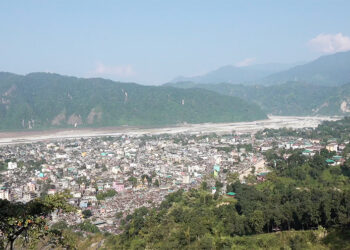 Archery is not just Bhutan’s national sport; it is also a bridge of friendship between Bhutan and India. This bond is on full display at the 2025 Bhutan National Archery Championship, where five teams from Sikkim are competing alongside Bhutanese teams. The event is strengthening cultural ties and celebrating a shared passion for the traditional game.
Archery is not just Bhutan’s national sport; it is also a bridge of friendship between Bhutan and India. This bond is on full display at the 2025 Bhutan National Archery Championship, where five teams from Sikkim are competing alongside Bhutanese teams. The event is strengthening cultural ties and celebrating a shared passion for the traditional game.
T.A.C. Namchi from Sikkim played 45 rounds in the league stage but was eliminated before the knockouts.
Still, players like 39-year-old Shedup Jigmet Wangchuk Bhutia and 35-year-old Basudev Rai are taking valuable lessons home, determined to return next year with better preparation, especially for Bhutan’s smaller targets.
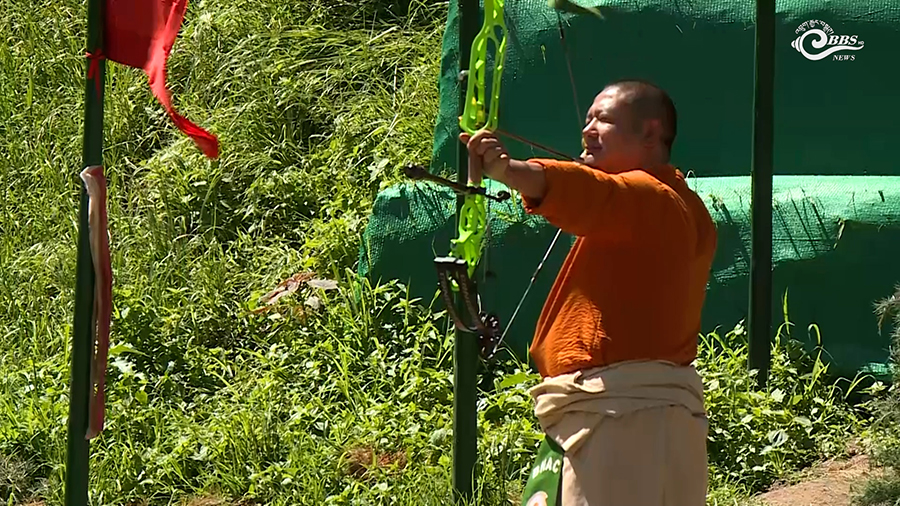 “Our T.A.C. team got the chance to play in Thimphu for the first time. The rules are a bit different from Sikkim. Here, the target is smaller, and you have to arrive early in the morning. We couldn’t hit as much as we wanted, but the experience was amazing,” said Shedup Jigmet Wangchuk Bhutia.
“Our T.A.C. team got the chance to play in Thimphu for the first time. The rules are a bit different from Sikkim. Here, the target is smaller, and you have to arrive early in the morning. We couldn’t hit as much as we wanted, but the experience was amazing,” said Shedup Jigmet Wangchuk Bhutia.
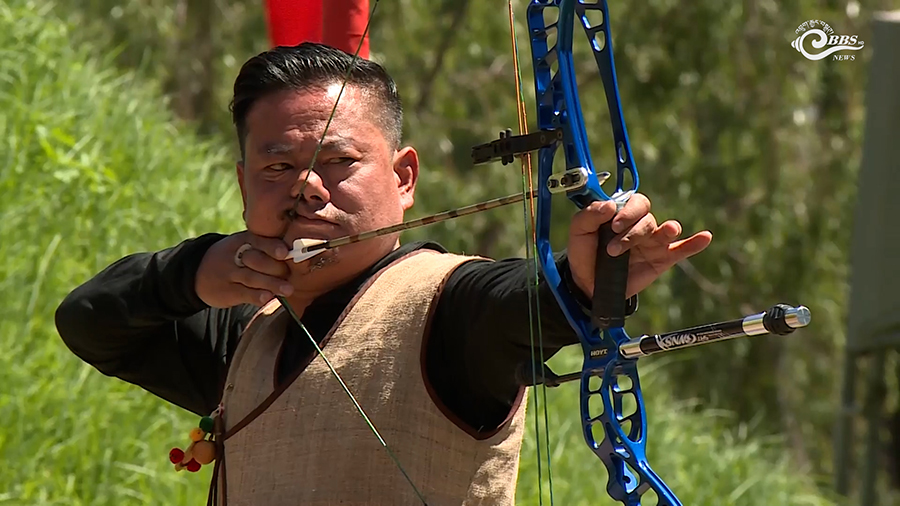 “In Sikkim, we play on a bigger target. Playing on the small Bhutanese target was challenging, but it will make us better. If we can play well on small targets, the bigger ones will be easier. We’re thankful to the Bhutan Archery Federation for inviting us and waiving entry and vehicle fees,” said Basudev Rai.
“In Sikkim, we play on a bigger target. Playing on the small Bhutanese target was challenging, but it will make us better. If we can play well on small targets, the bigger ones will be easier. We’re thankful to the Bhutan Archery Federation for inviting us and waiving entry and vehicle fees,” said Basudev Rai.
The knockout round began on Friday at the Bhutan Archery Federation’s range. Denzong Dapen was knocked out yesterday, but Team Dhokbu advanced to the quarterfinals after a win on Saturday.
Among them is 27-year-old Kinchok Tashi, one of the youngest Sikkimese archers.
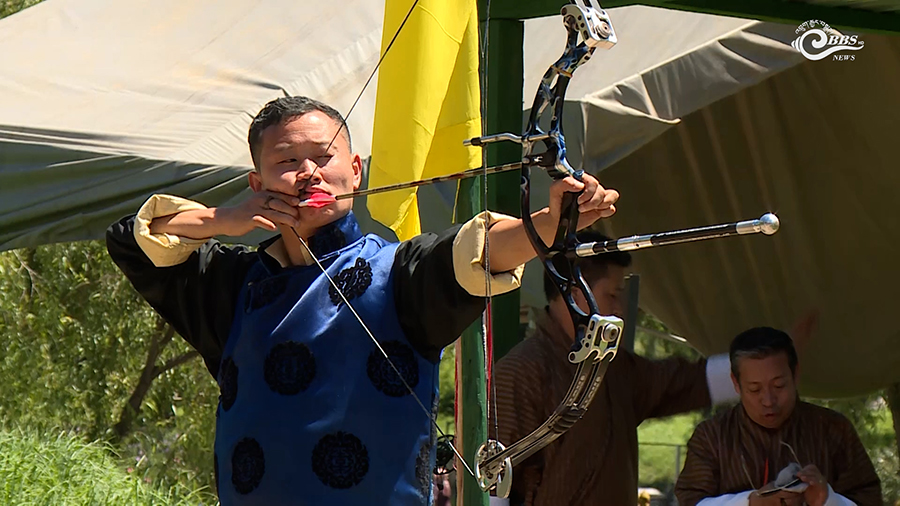 “In archery, there’s no age limit. I love the game because it promotes our culture, we wear gho, sing traditional songs, and enjoy playing. In Sikkim, there are fewer teams, so competing in Bhutan gives us great exposure.”
“In archery, there’s no age limit. I love the game because it promotes our culture, we wear gho, sing traditional songs, and enjoy playing. In Sikkim, there are fewer teams, so competing in Bhutan gives us great exposure.”
On the other end of the age spectrum is 45-year-old Chedup Tshering Bhutia from Team Raging Bulls, one of the most experienced Sikkimese archers.
He first played in Changlimithang around 2010 and returned this year with high hopes.
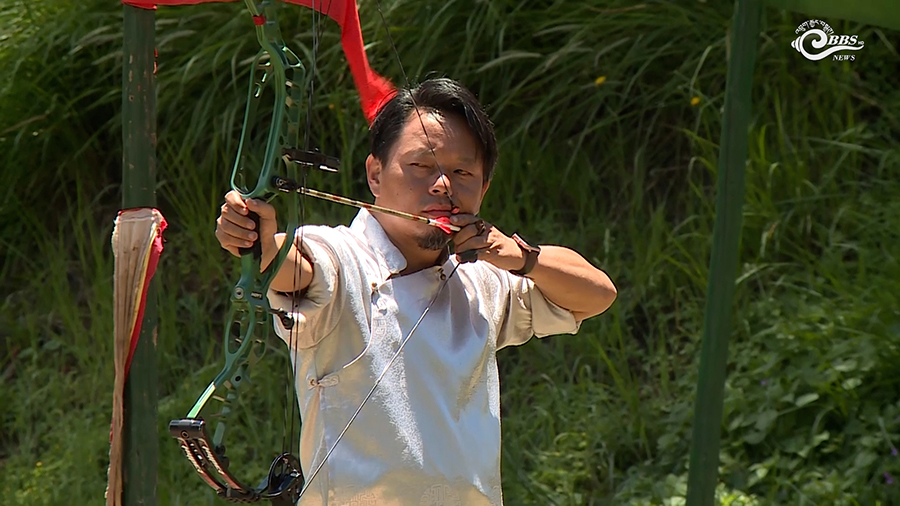 “Bhutan’s archers have also started coming to Sikkim, and there is a strong bond between archers from both sides. We don’t even need to motivate them; the connection is already there. In Sikkim, we don’t have as many teams as Bhutan, but the camaraderie among archers is strong, and we know each other well. Because of this bond, many archers are very interested in coming to Bhutan to play archery.”
“Bhutan’s archers have also started coming to Sikkim, and there is a strong bond between archers from both sides. We don’t even need to motivate them; the connection is already there. In Sikkim, we don’t have as many teams as Bhutan, but the camaraderie among archers is strong, and we know each other well. Because of this bond, many archers are very interested in coming to Bhutan to play archery.”
This year’s championship has brought together 401 archers from Bhutan and 19 archers from Sikkim, proving that the love for archery crosses borders and generations.
 For the Sikkimese teams, every arrow shot in Thimphu is more than just a competition, it is a celebration of friendship, culture, and a shared passion for Bhutan’s national sport.
For the Sikkimese teams, every arrow shot in Thimphu is more than just a competition, it is a celebration of friendship, culture, and a shared passion for Bhutan’s national sport.
Karma Wangdi
Edited by Sonam Pem









